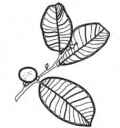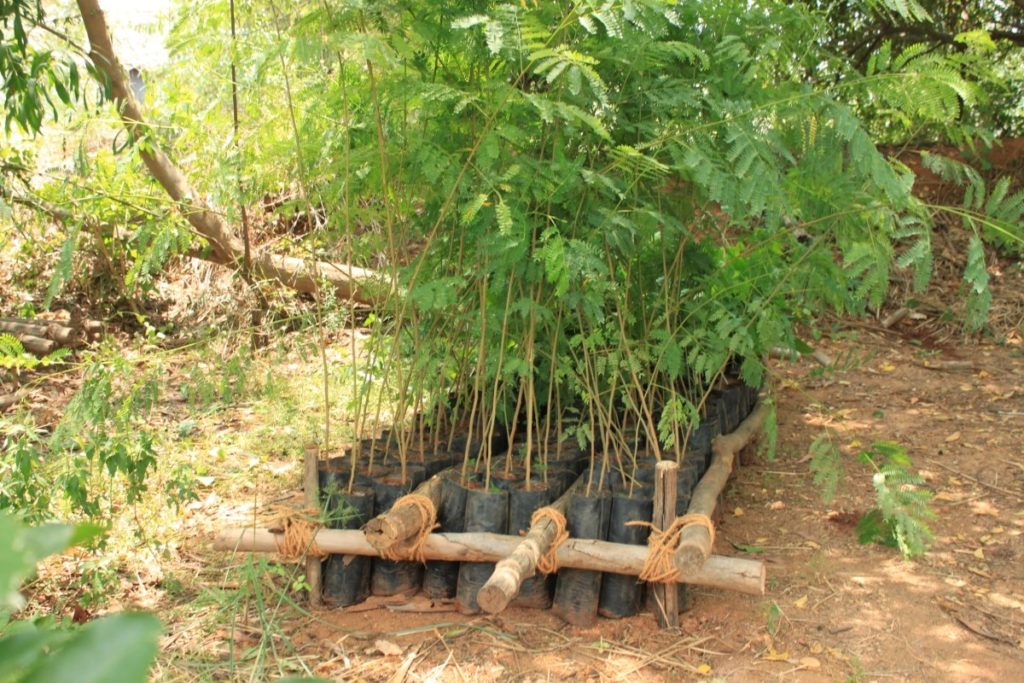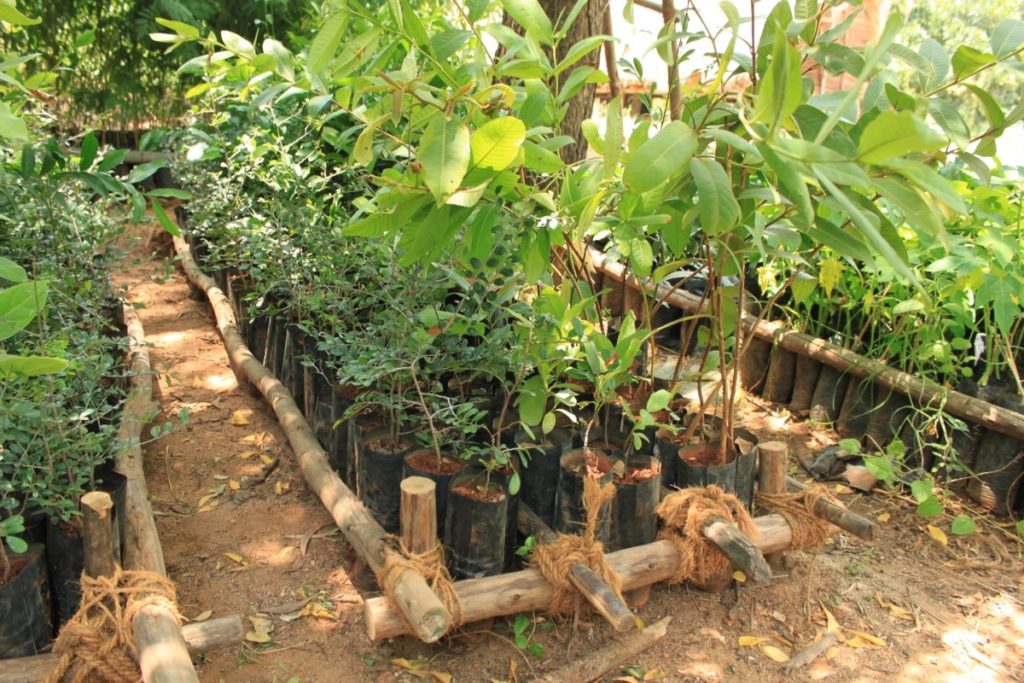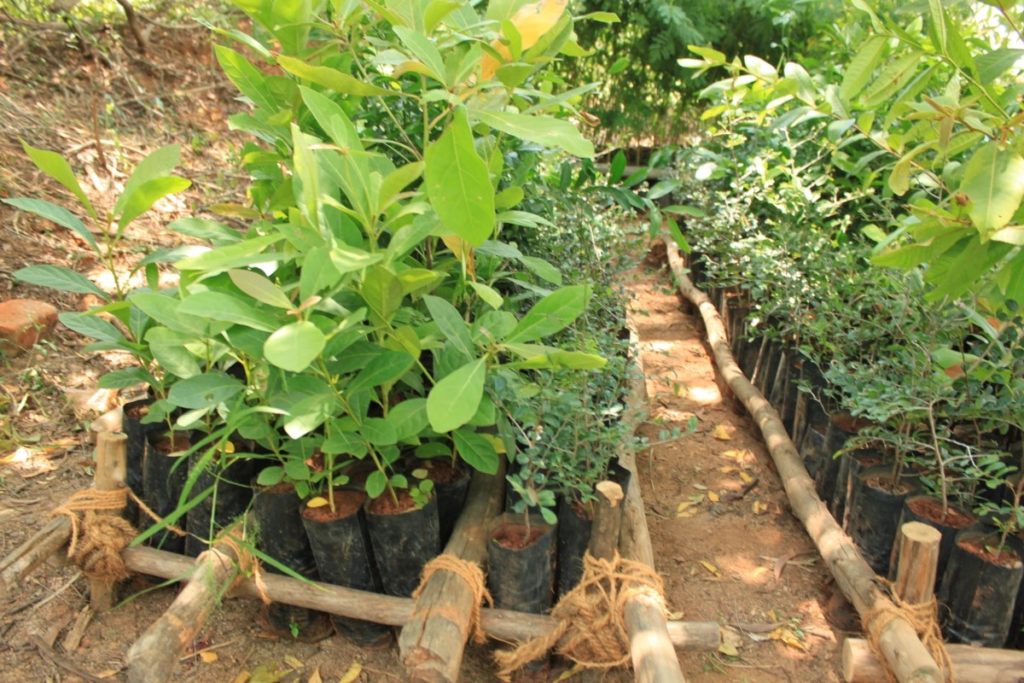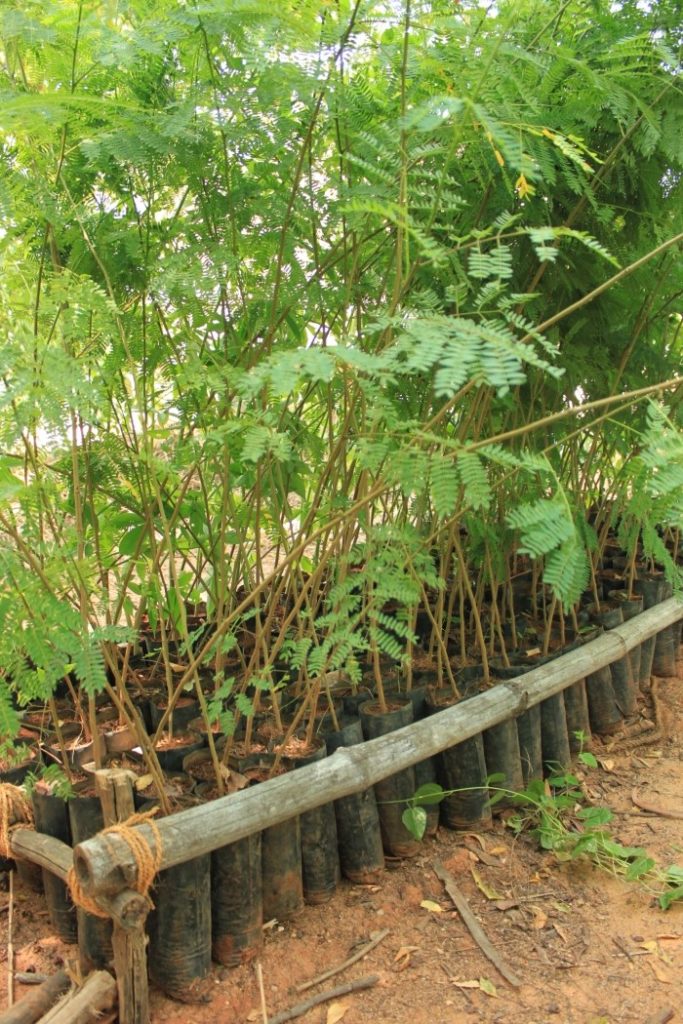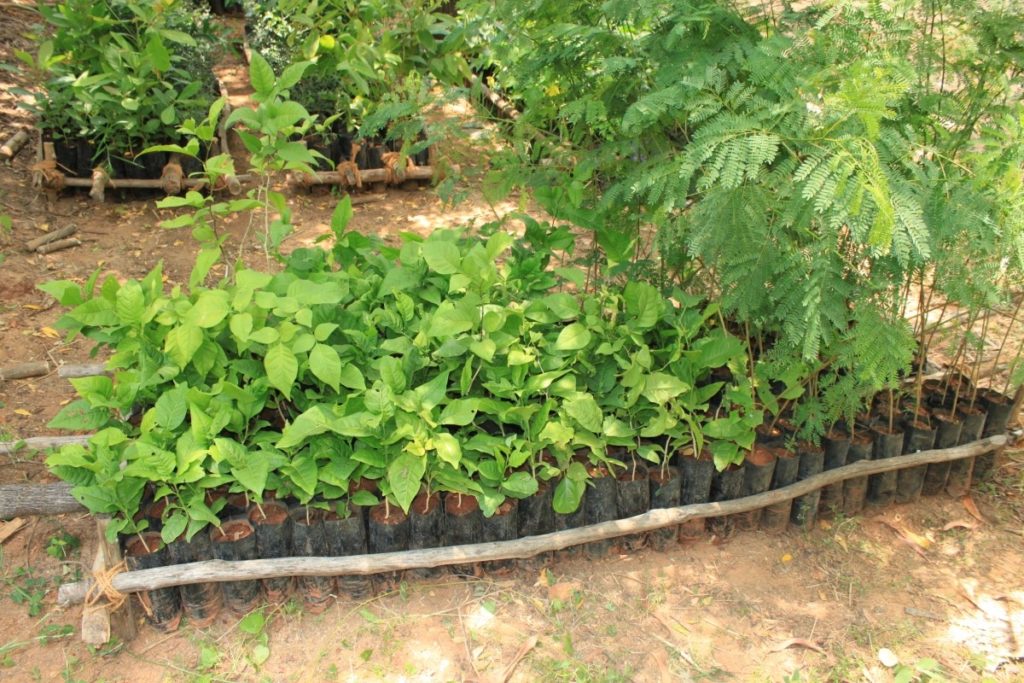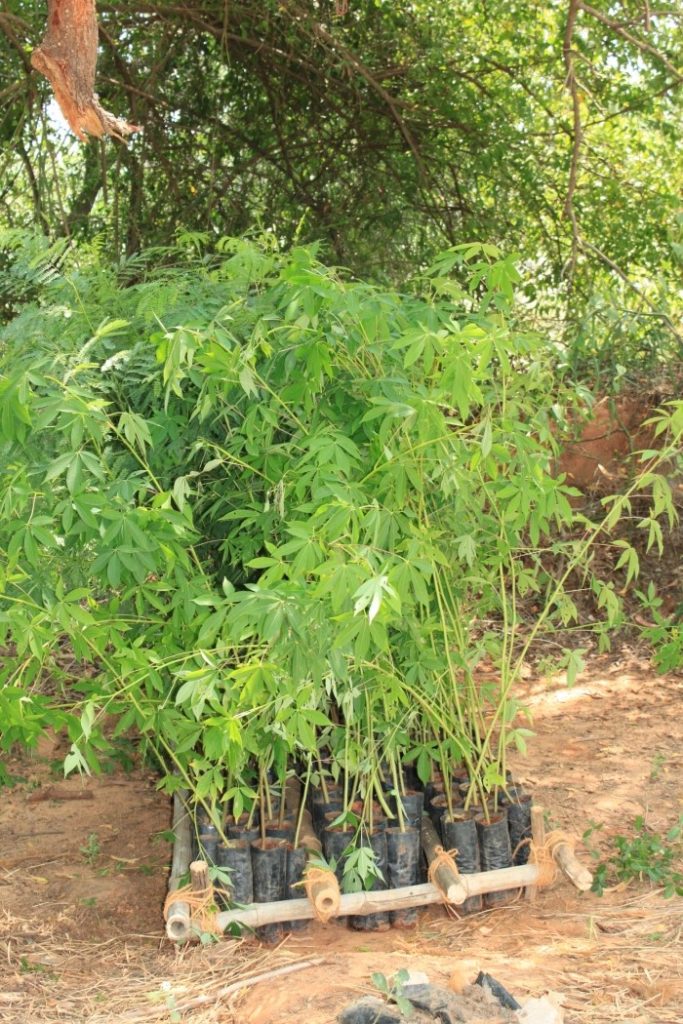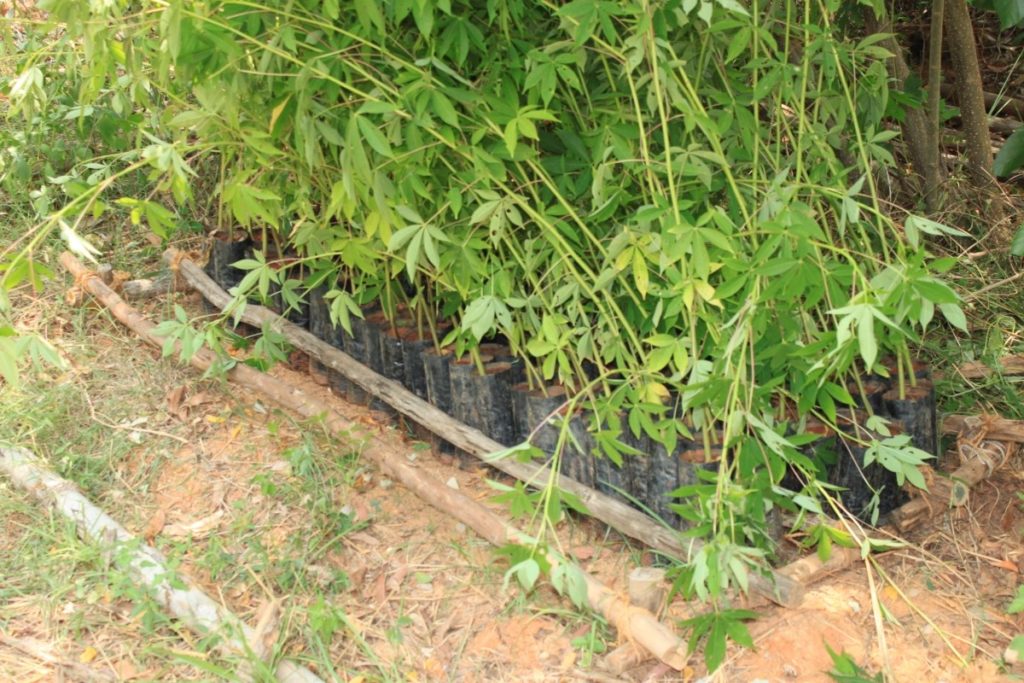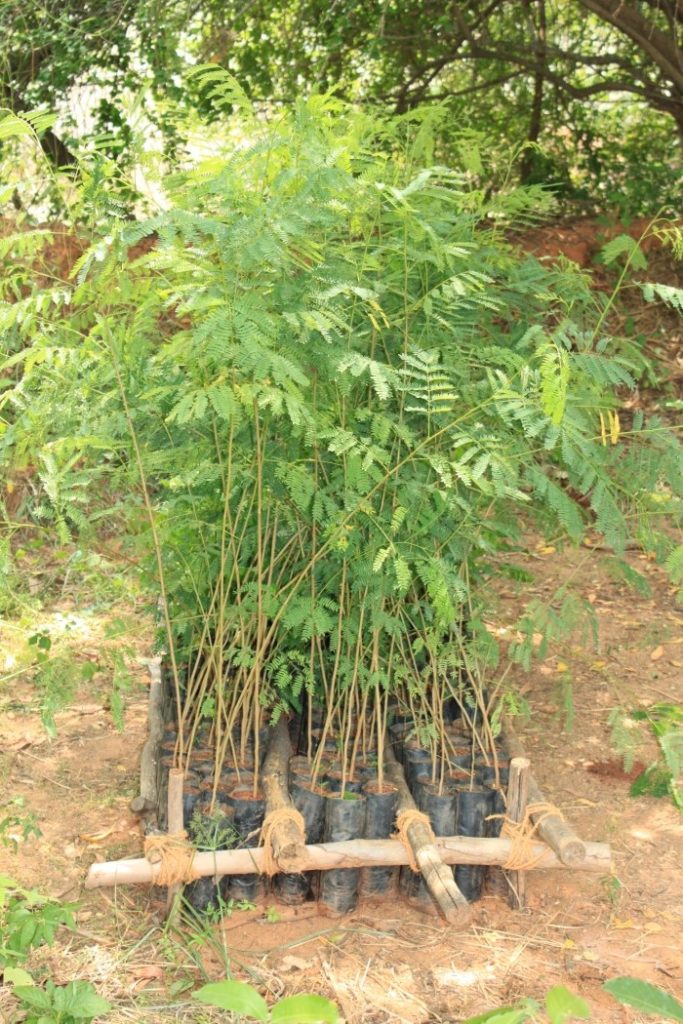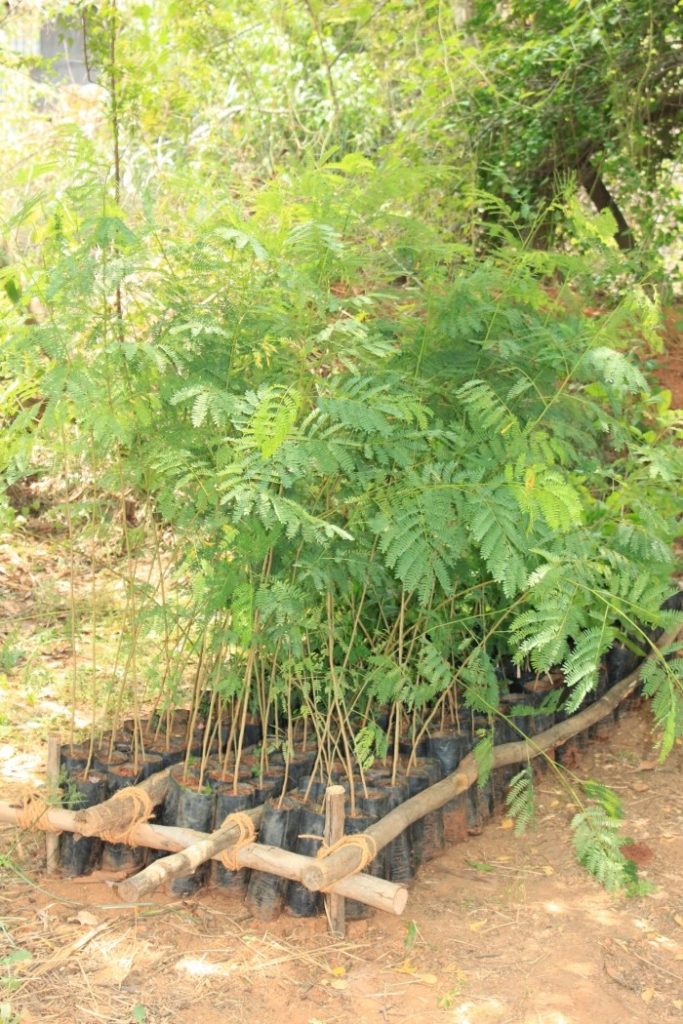The India Project
From 2012 to 2014, Forest Commons (then known as Arbres Sauveurs) implemented a project to regenerate the endemic dry tropical forest of the Coromandel Coast in Tamil Nadu near Pondicherry in South-eastern India. This work was carried out in partnership with the India-based organisation Sadhana Forest and with the support of the Inddigo Society.
The project focused on planting oxalogenous tree species, as well as other endemic species that are important to the regeneration of the tropical dry evergreen forest, Sempervirens, which is native to the region but which has almost entirely disappeared (only 0.01% of the original forest cover remains). Our local partner Sadhana Forest continues to focus on naturally restoring this threatened forest, which is vital for regional biodiversity and ecosystem health.
Initial project activities involved the creation of dikes, ditches and reservoirs in order to best collect and direct available surface water at the planting sites.
We then planted the trees according to a technique called “aggradation”, which draws its inspiration from nature. Indeed, in the natural world, no one digs holes to plant trees… Instead, seeds settle on fallen leaf litter, which also eventually accumulates to cover them, and the seeds then germinate in this organic bed resting above the underlying soil.
A low-tech wick irrigation system was then installed alongside each planted tree. By drawing water from a container via a rope wick, this system allows a slow diffusion of water by capillary action and minimises evaporation by delivering the water directly to the plant roots below the soil surface.
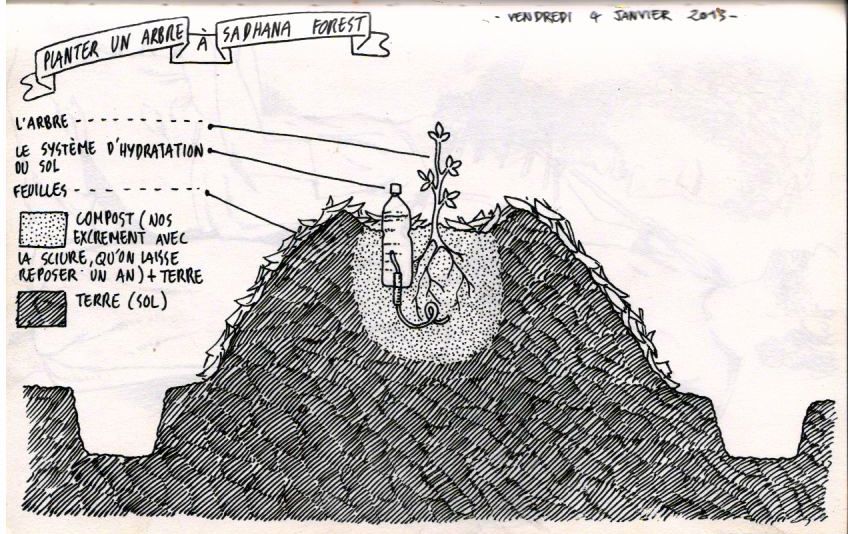
Diagram showing the aggradation planting system. Credit: Sadhana Forest.
Nurseries
Photo credit: Sadhana Forest
Planting trees by aggradation:
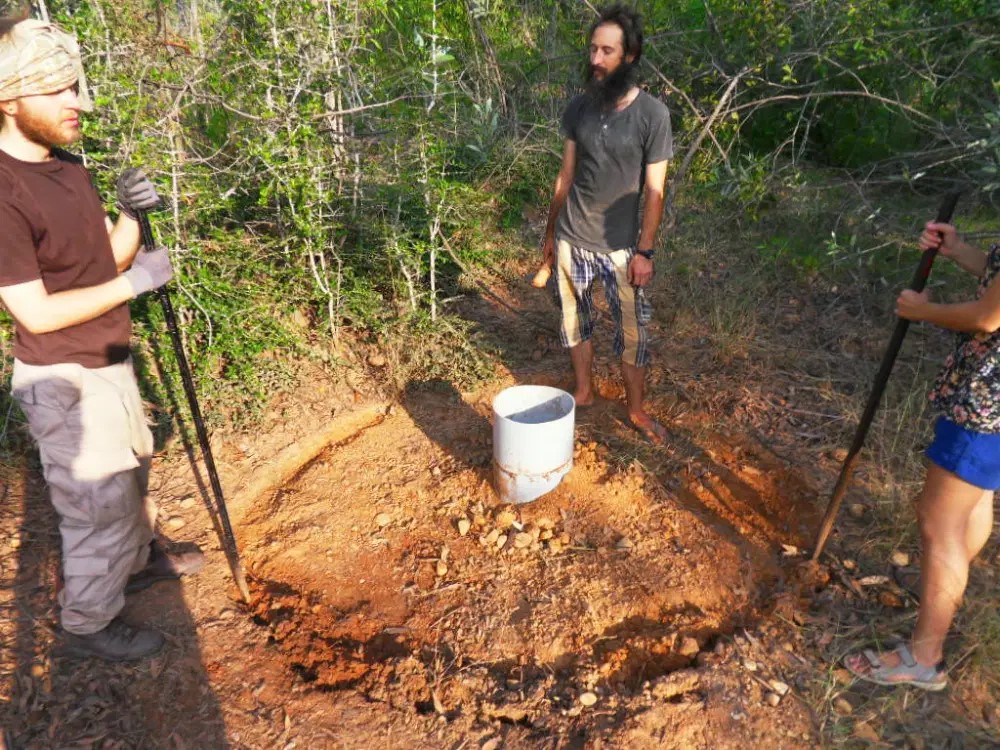
Preparation of the mound with the central cylinder.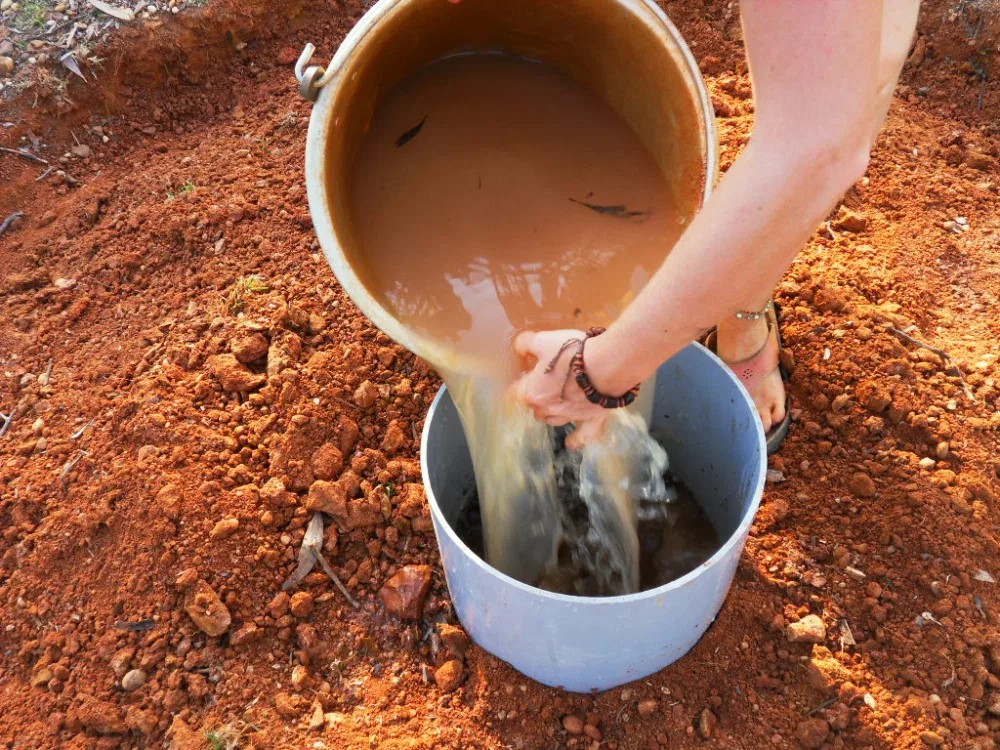
Initial watering in the cylinder, which will create an irrigation column under the tree. 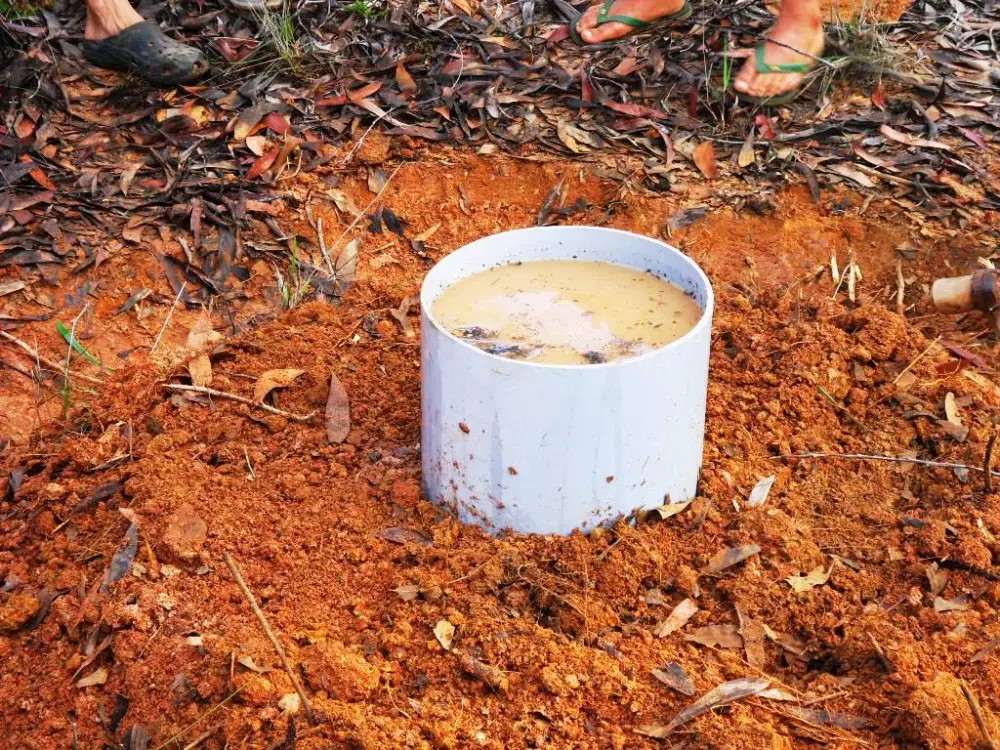
The mound is formed around the cylinder. 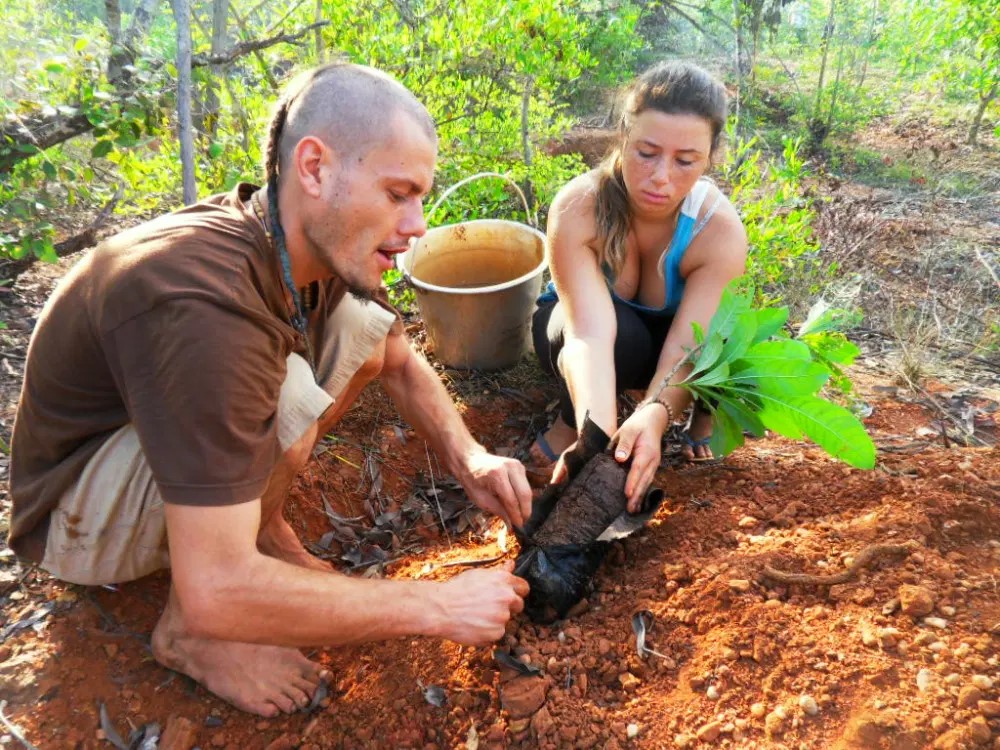
The sapling is prepared… 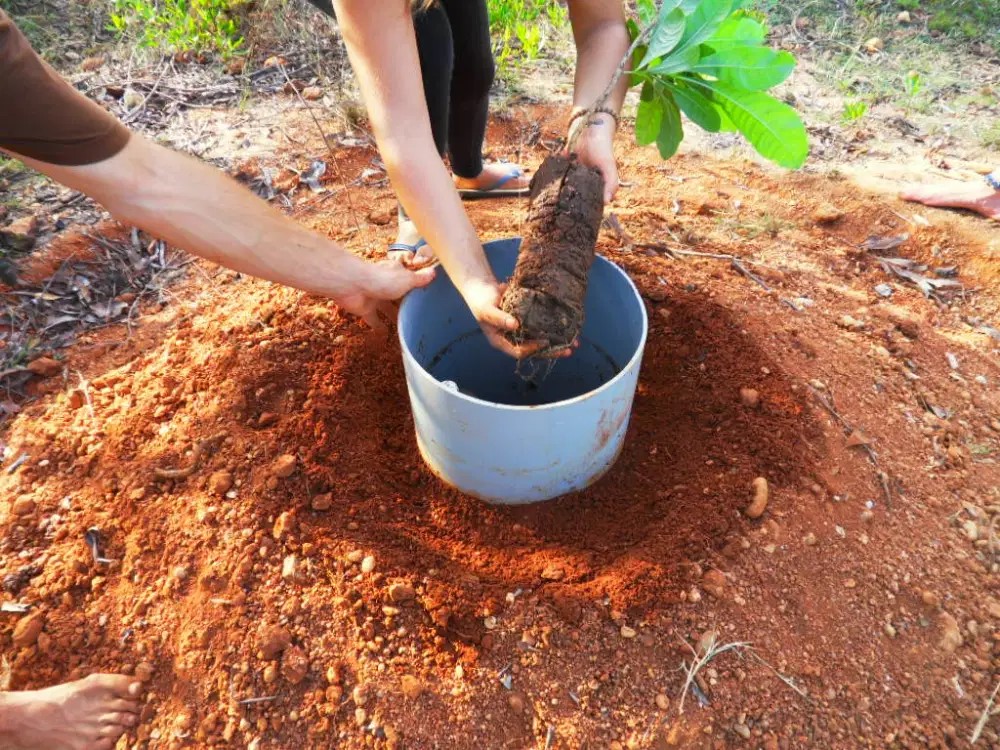
…and placed in the central cylinder… 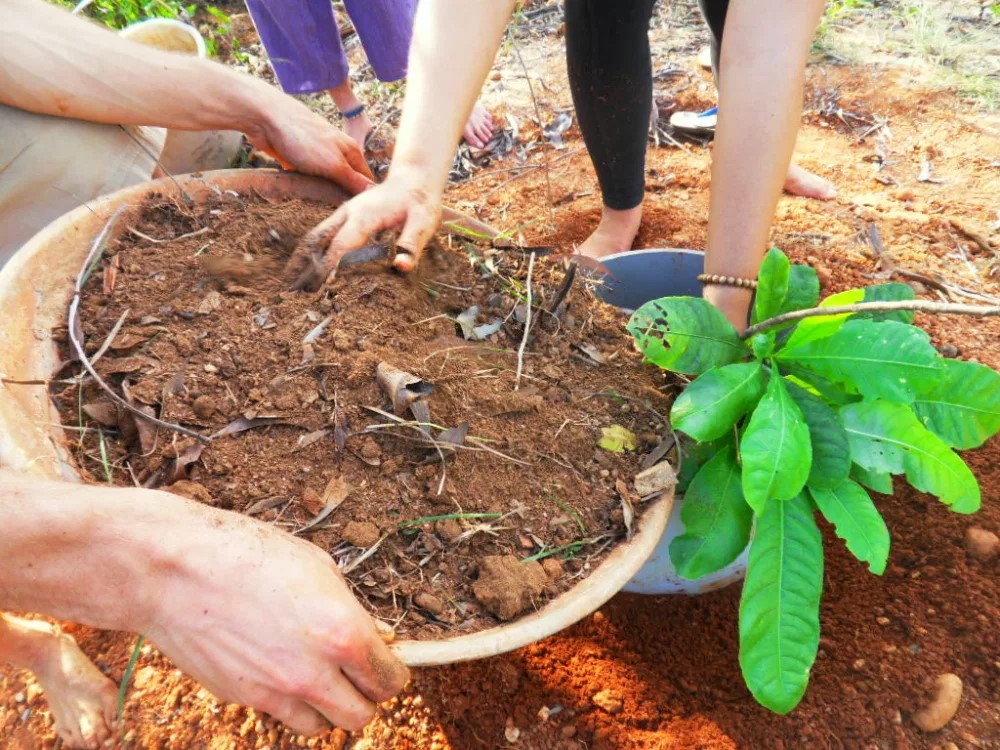
Compost is added… 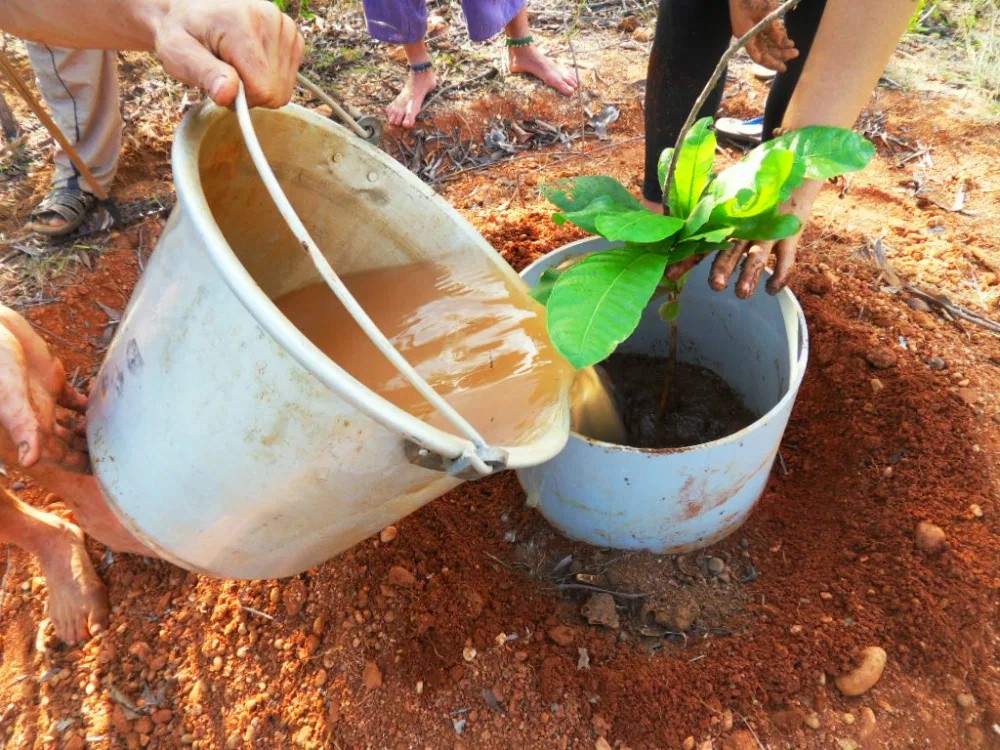
…and the young tree is watered once again… 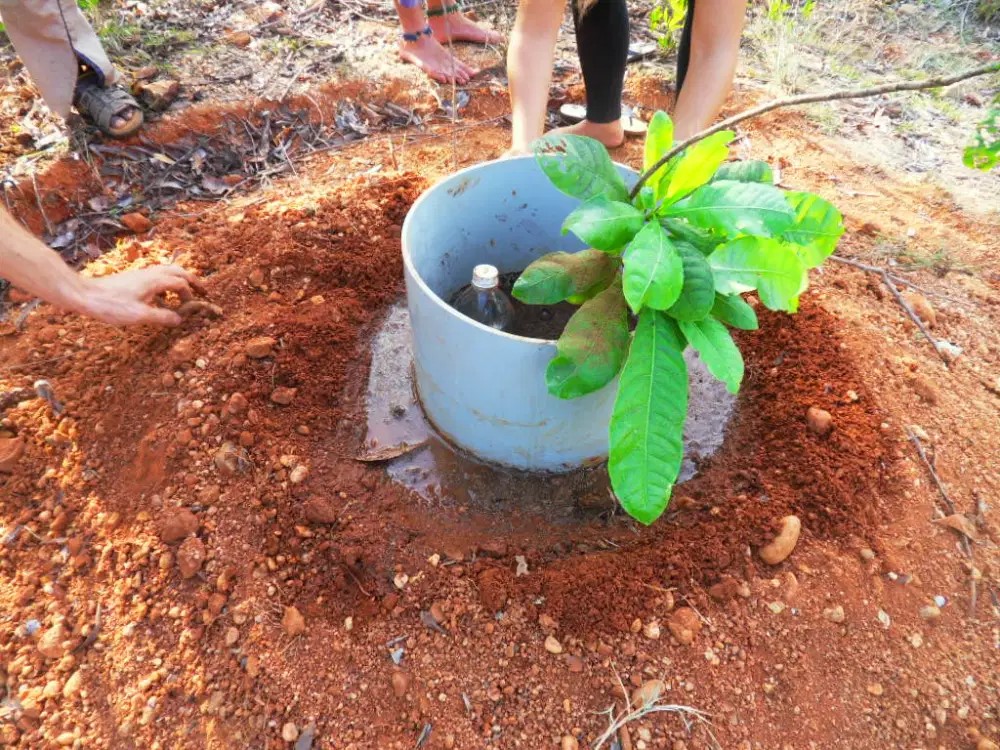
… 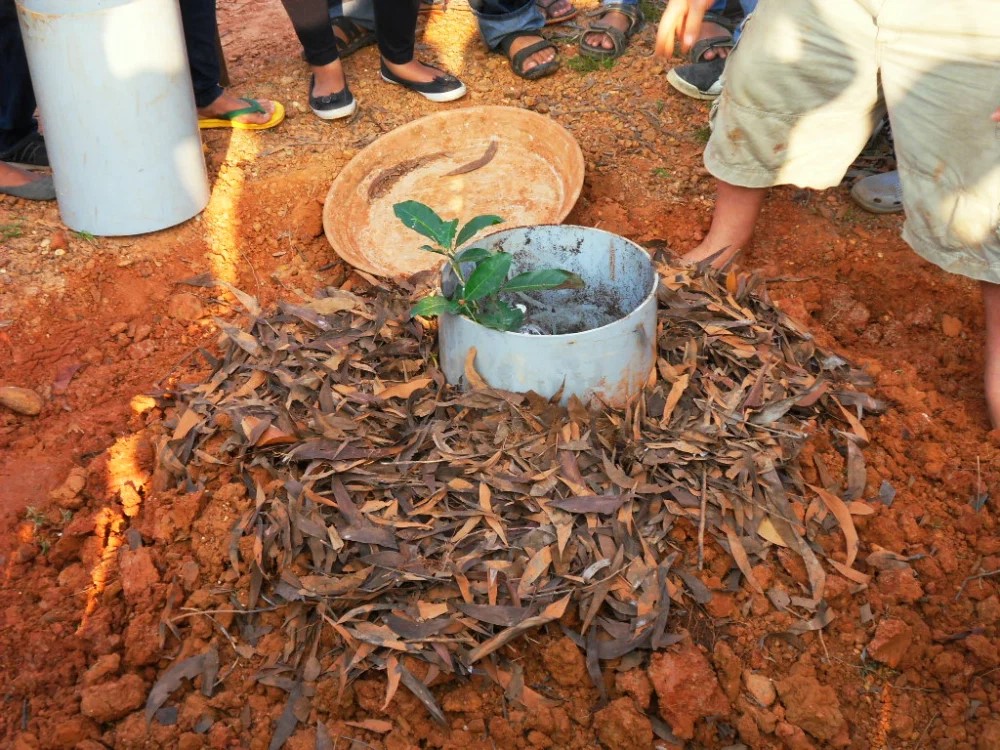
The mound is mulched… 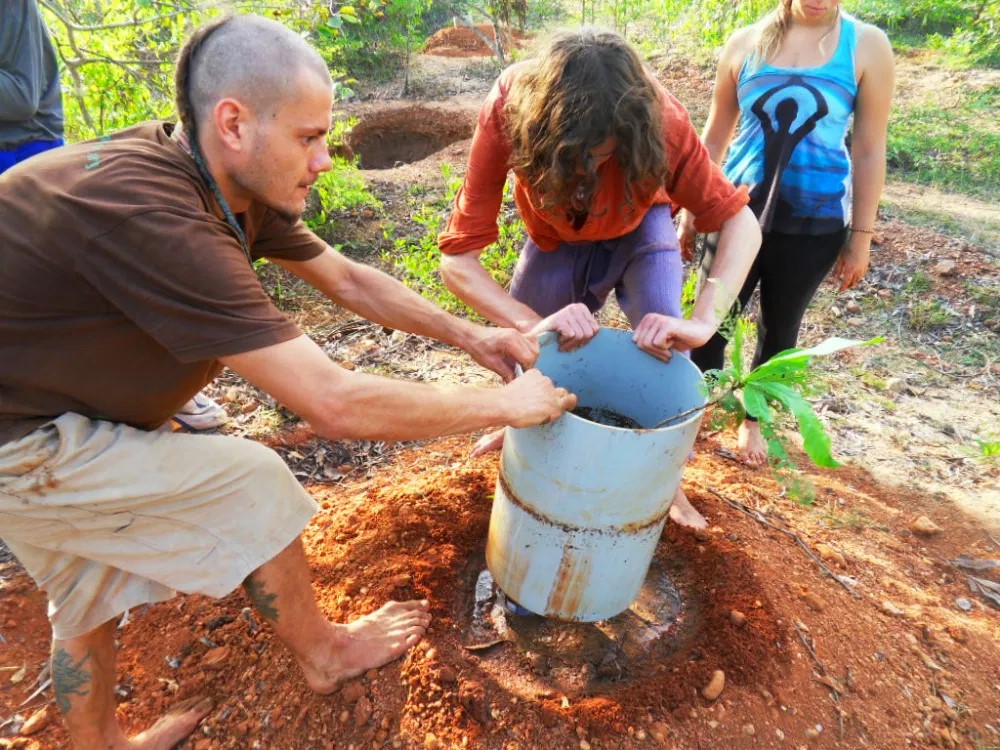
…and the central cylinder removed. 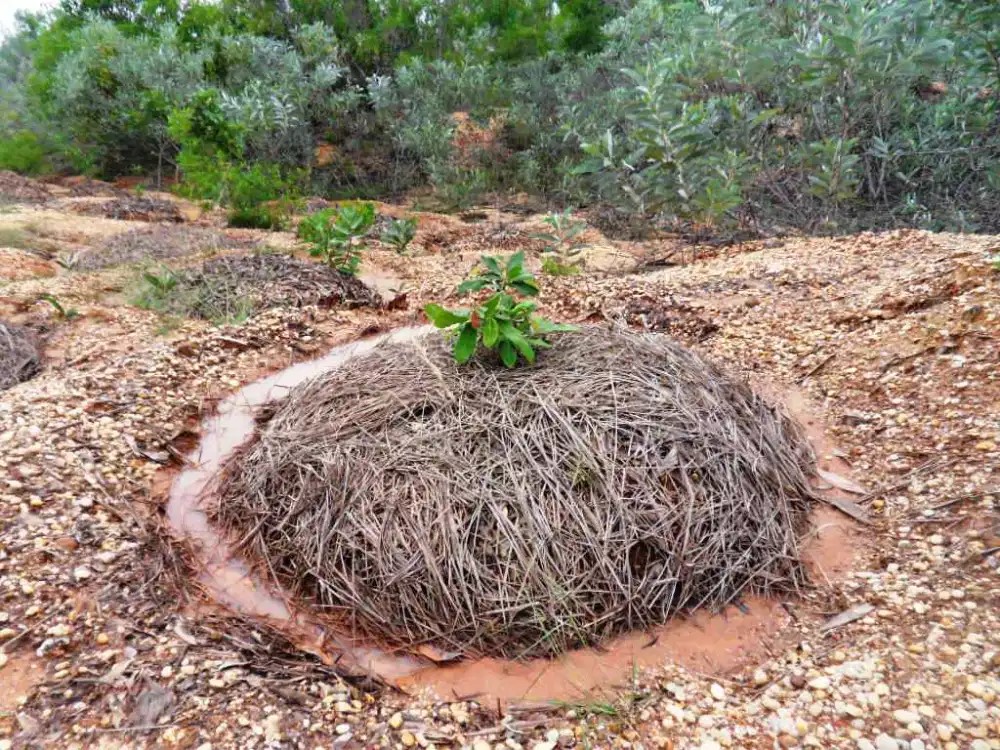
The final result, showing the water collection channel that allows the tree to retain any water that trickles down from the mound.
Photo credit: Sadhana Forest
The wick irrigation system:
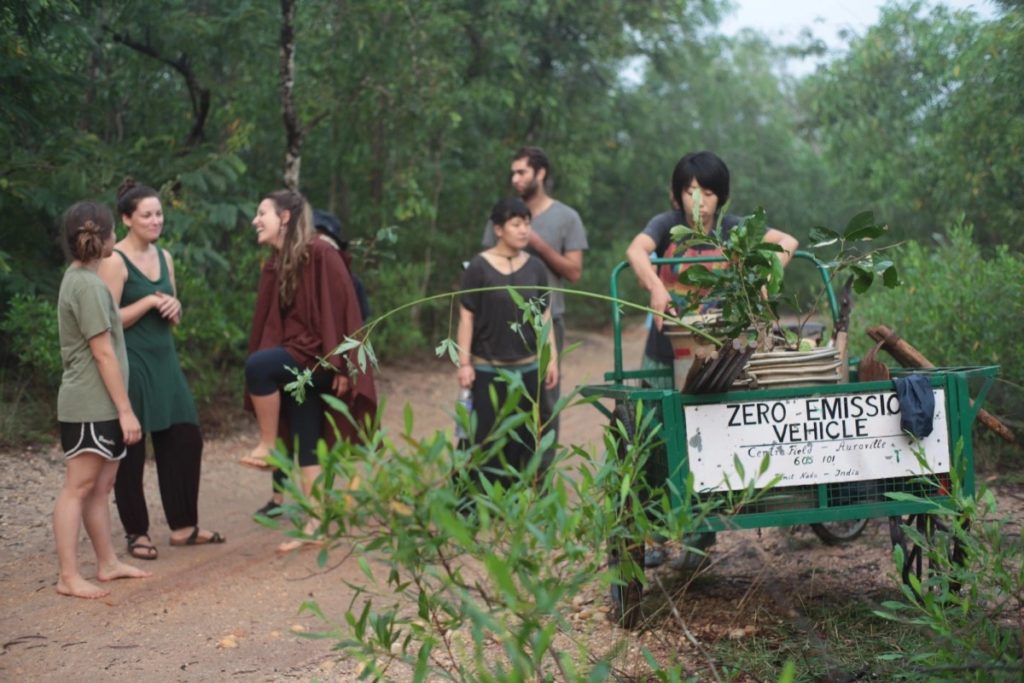
On the way to the field. 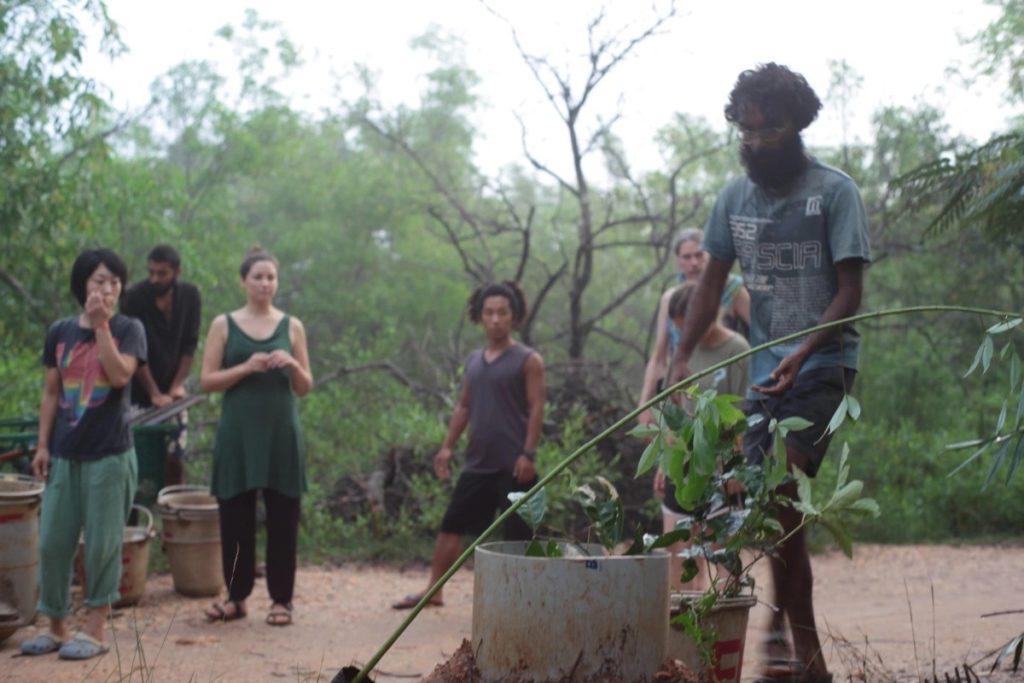
Preparing the trees and equipment… 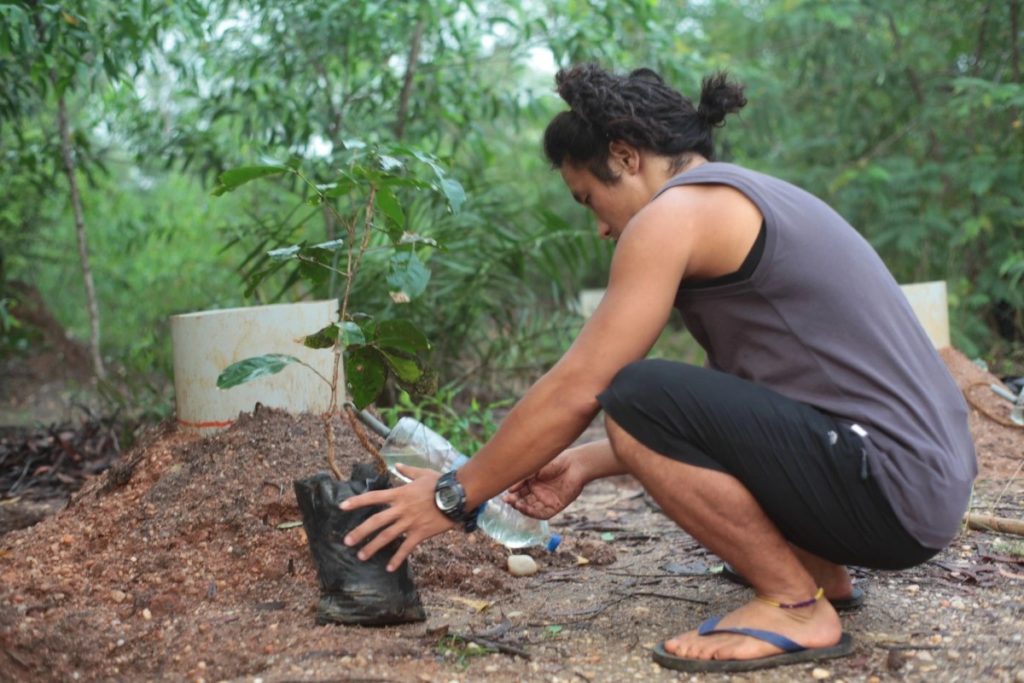
… 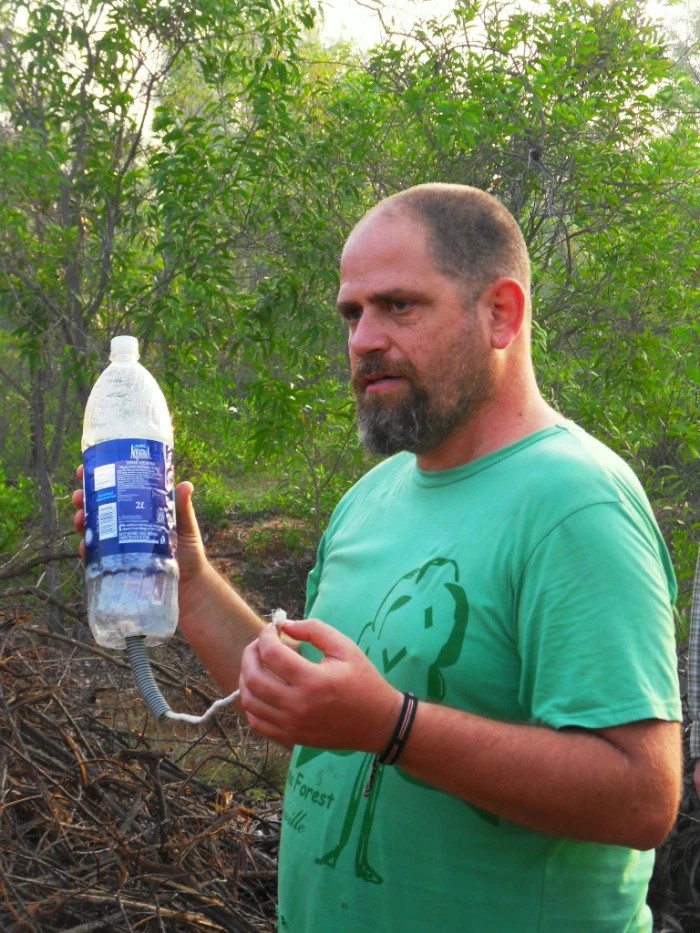
Aviram Rozin, Sadhana Forest founder, explaining the wick irrigation technique. 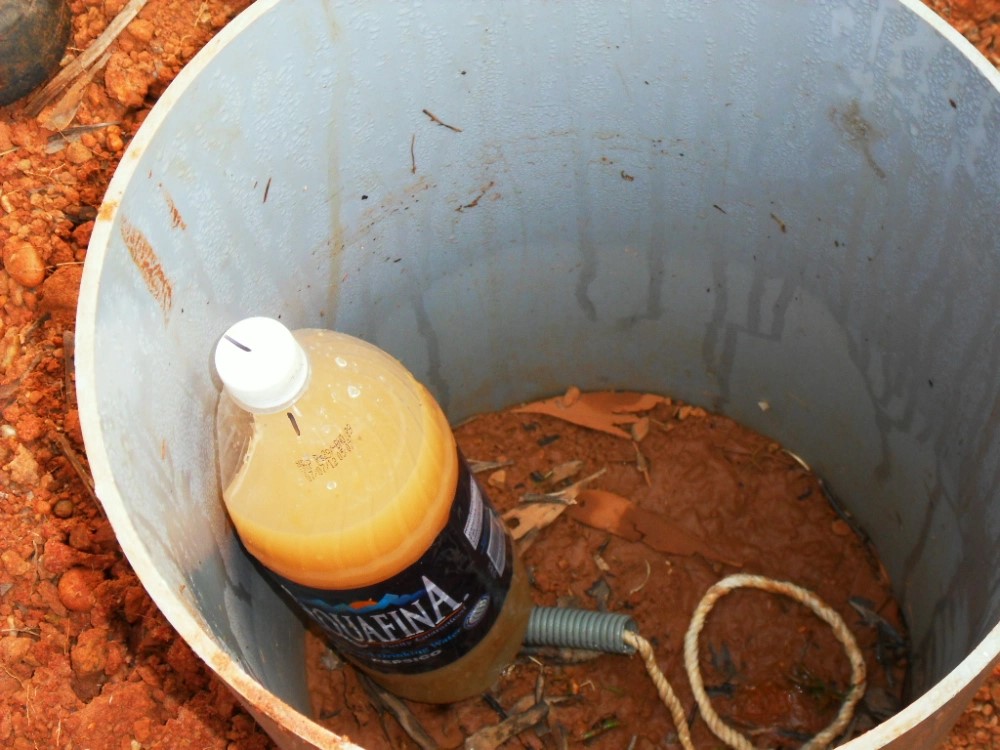
The irrigation bottle and its wick are placed at the bottom of the shaft hole. 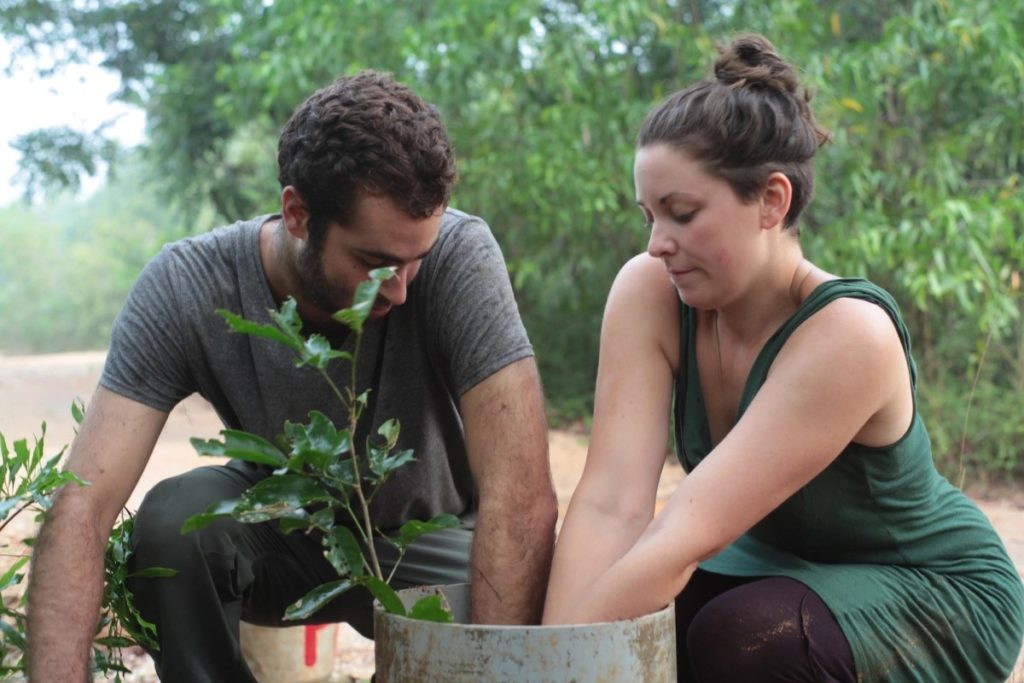
Installation of the tree with its irrigation system. 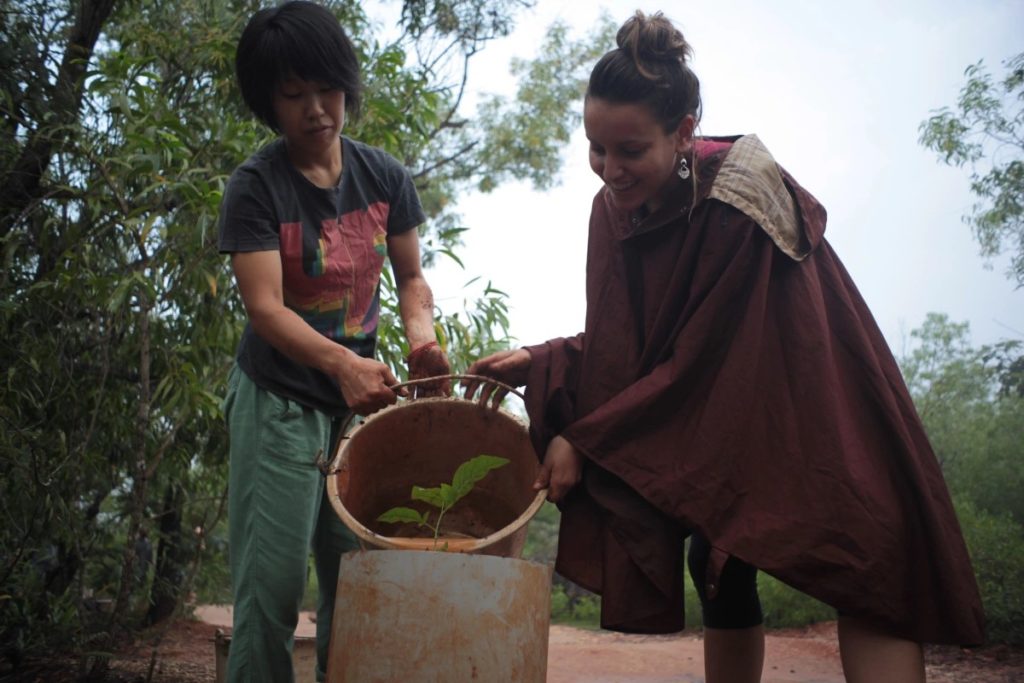
Watering the newly planted sapling. 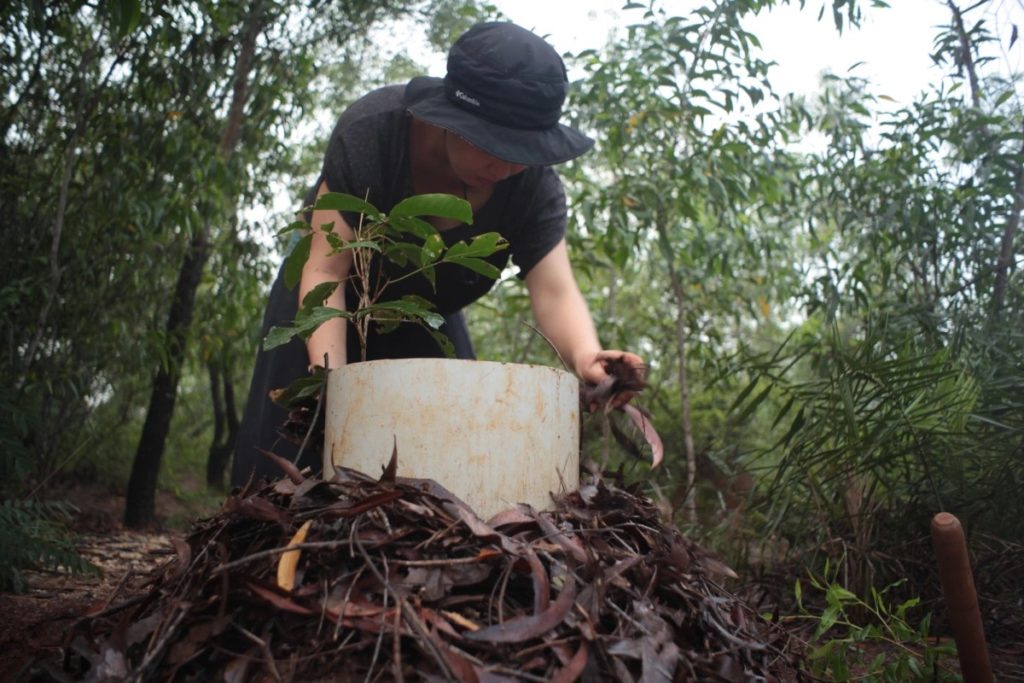
Mulching with fallen leaves gathered for the purpose. 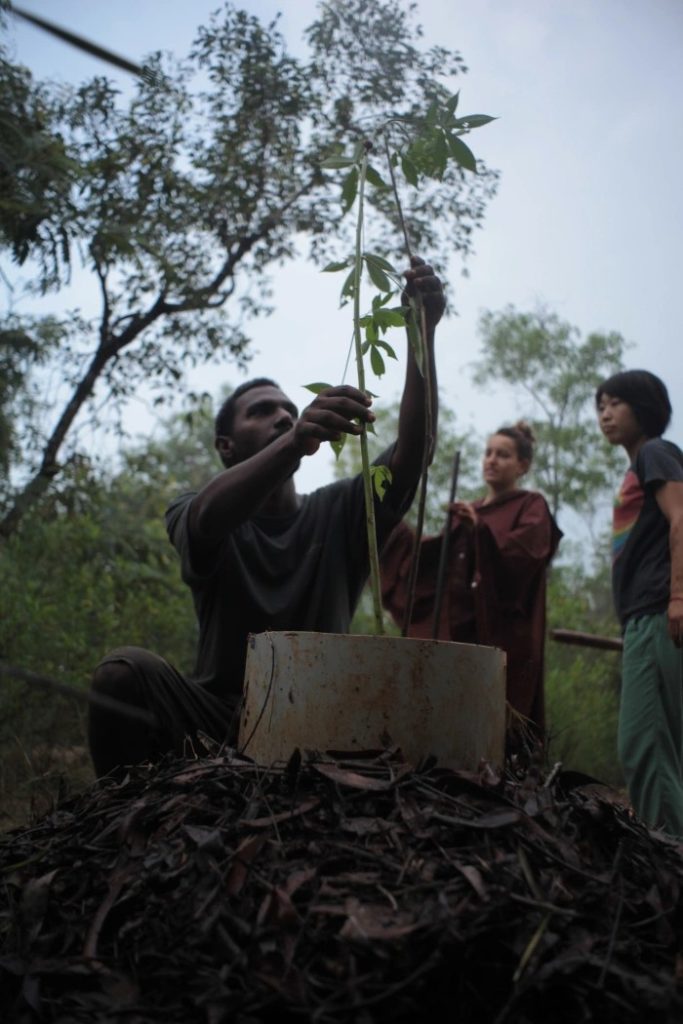
Staking the sapling. 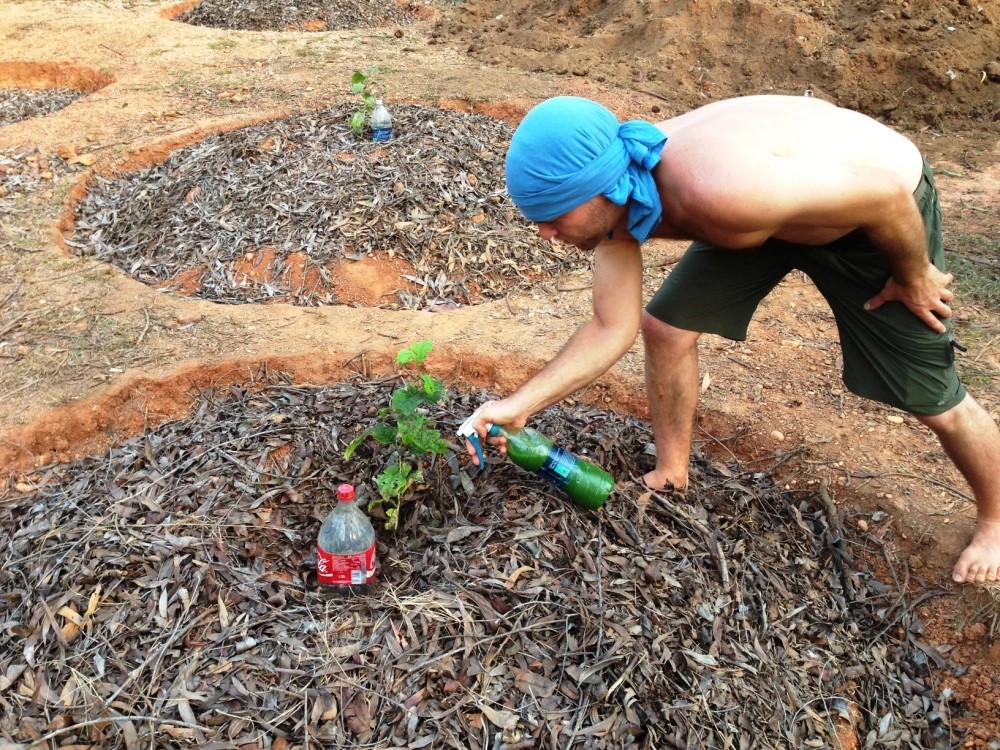
Applying a mixture of green manure to the sapling. 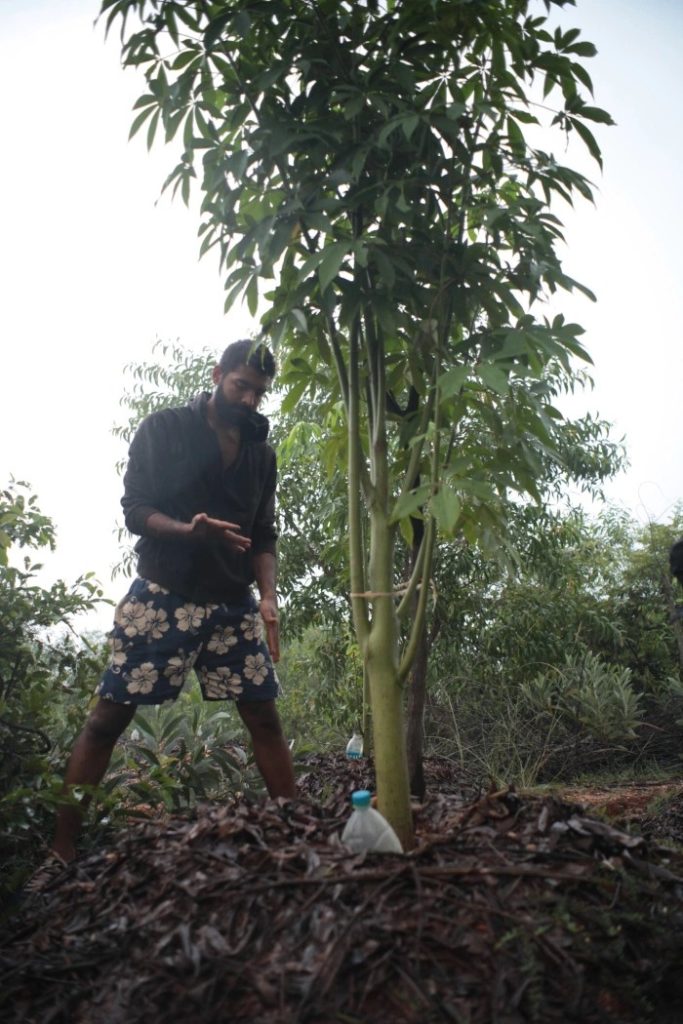
A healthy young tree! 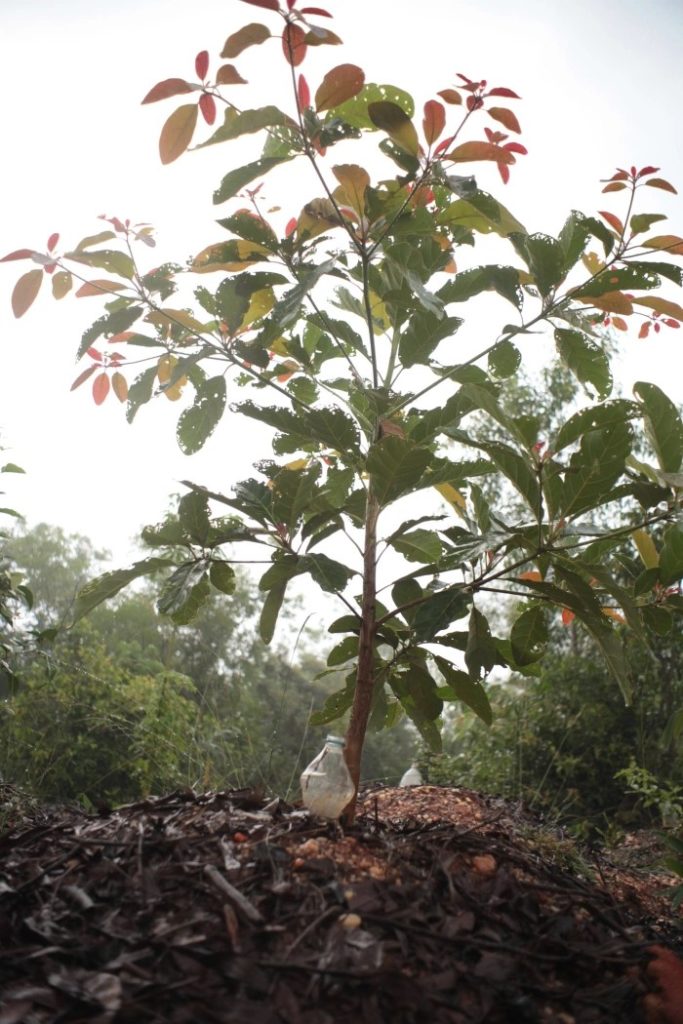
A healthy sapling with its wick irrigation bottle. 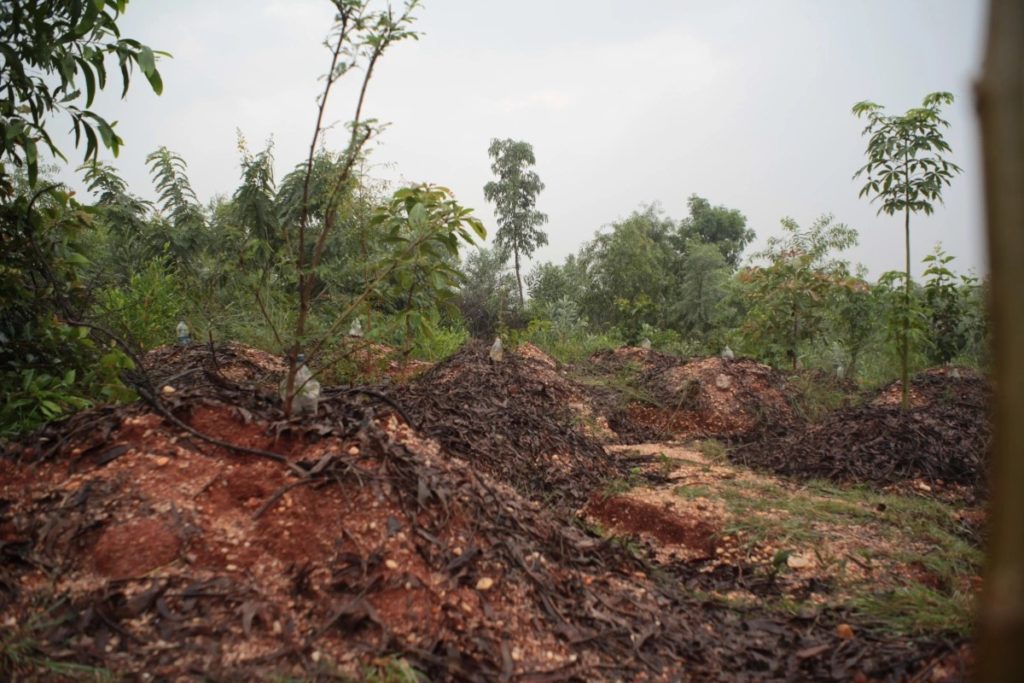
View of some trees on their mounds, well mulched and watered with wick irrigation. 
Saplings on their mulched mounds with their wick irrigation bottles. 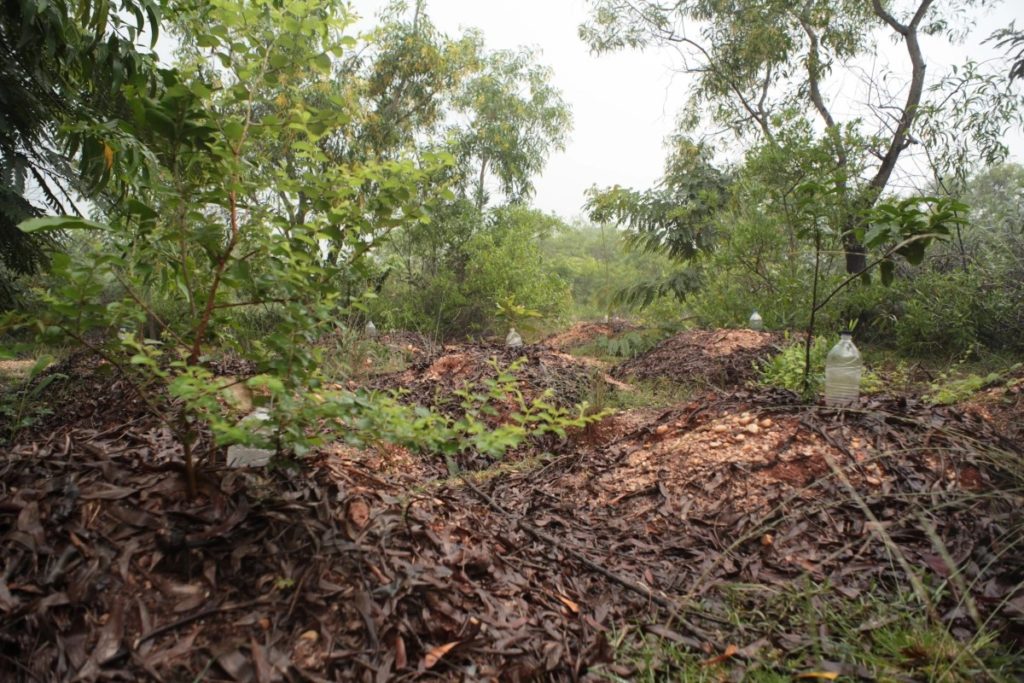
Another view of some young trees planted by aggradation and watered by wick irrigation.
Photo credit: Sadhana Forest
